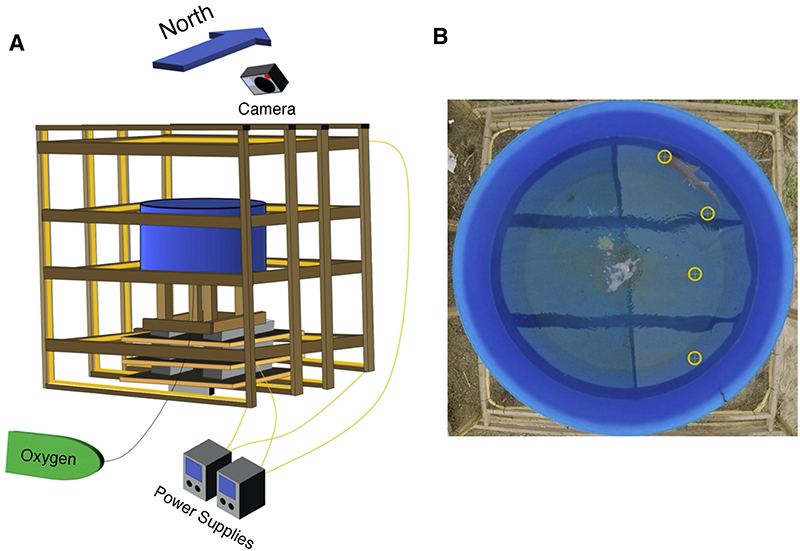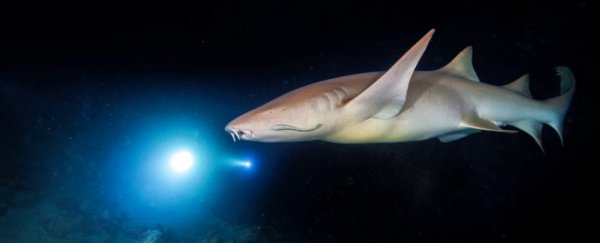Sharks are known for their long-distance migrations – across thousands of kilometers – but what's not clear is exactly how they navigate. An interesting new experiment involving swimming pools and magnetic fields may give us some big hints, however.
Knowing that sharks are sensitive to electromagnetic fields, researchers ran tests involving 20 juvenile bonnethead (Sphyrna tiburo) sharks, captured in the wild and placed individually inside a circular pool.
Magnetic cues around the pool were simulated and then modified to see if they had an effect on the swimming direction of the sharks – and the bonnetheads did indeed appear to use the magnetic fields to work out which direction home was in.
 The experiment setup. (Keller et al, Current Biology 2021)
The experiment setup. (Keller et al, Current Biology 2021)
"It had been unresolved how sharks managed to successfully navigate during migration to targeted locations," says oceanographer Bryan Keller, from Florida State University. "This research supports the theory that they use the Earth's magnetic field to help them find their way; it's nature's GPS."
In the tanks, the bonnetheads were exposed to magnetic fields that replicated conditions both a long way north and a long way south from their home. In the south configuration, the sharks showed a tendency to want to travel north.
When the magnetic field in the tank matched the magnetic field at the site where the sharks were captured, they showed no preference in terms of swimming in a particular direction – it seems as though they thought they were back where they should be. Both these conditions matched the hypothesis of the study team.
There was no noticeable difference when the sharks were exposed to the north configuration, through.
The researchers suggest this was because the sharks had never experienced a magnetic field configuration like this – in other words, they only respond to environments they've learned from their travels, rather than from any magnetic field reading anywhere on Earth. But more research will need to be done to confirm this.
What happens with these young bonnethead sharks is likely to apply to other types of shark species too. The study authors point to the great white that was documented journeying between South Africa and Australia one year, for example.
"How cool is it that a shark can swim 20,000 kilometers round trip in a three-dimensional ocean and get back to the same site?" says Keller. "It really is mind blowing. In a world where people use GPS to navigate almost everywhere, this ability is truly remarkable."
Population structure could also be controlled by this magnetic sense, the researchers suggest – it's possible that responses to Earth's magnetic field affect the location of shark populations and the genetics of those communities.
Sharks aren't the only creatures to get around like this either, because sea turtles also rely on magnetic signatures to find their way back to the beaches where they hatched, sometimes covering similarly huge distances to sharks.
There's more work to do – the researchers want to test out how sharks respond to magnetic fields from human-made objects like cables, and how these fields affect everyday shark life – but this initial swimming pool and magnets piece of research is a definite success.
"To be honest, I am surprised it worked," says Keller. "The reason this question has been withstanding for 50 years is because sharks are difficult to study."
The research has been published in Current Biology.
